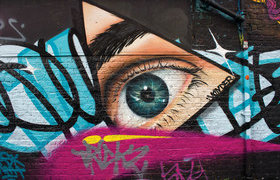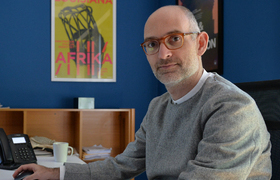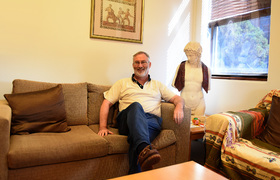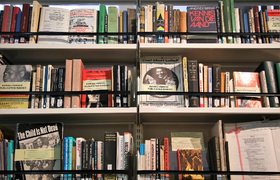Art, engineering works win UCT Book Award
13 December 2019 | Story Helen Swingler. Read time 9 min.
University of Cape Town (UCT) academics Professor Alphose Zingoni and Anna Tietze have jointly won the 2019 UCT Book Award for their works on engineering and art respectively. The award recognises outstanding publications by staff and will be presented at their faculty graduation ceremonies this week.
Published works in any category, including monographs, textbooks, novels, collections and popular writing, are eligible for consideration by the Book Award Committee. Members of the university community may also nominate UCT books.
This annual award has a R30 000 prize.
First full Iziko history
A senior lecturer based at the Michaelis School of Fine Art in the Faculty of Humanities, Tietze’s winning title, A History of the Iziko South African National Gallery: Reflections on Art and National Identity (UCT Press, 2017), presents the first full history of the gallery.
It traces the gallery’s fortunes from its inception in the 1870s to the present and considers the formative influences of successive directors and trustees, as well as governments, showing how these have shaped its collection and exhibition policies.
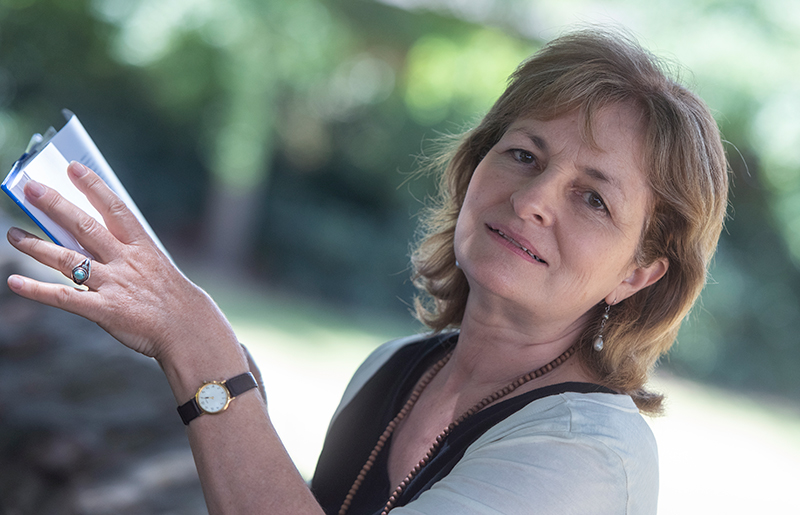
“The accolade of the UCT award is particularly rewarding because it gives the gallery and this research some much-needed prominence,” said Tietze, who spent several years researching its history, specialising in the pre-war (pre-1950) gift collections.
“This has involved my curating several retrospective exhibitions at the gallery and publishing comprehensive catalogue raisonnés to accompany these exhibitions. The publication of a history of the institution from its inception to the present day was a natural culmination of this long-standing research project.”
As the publication came at a time of major debate within South African museums and universities, Tietze said it offered a forum for reflection on how these institutions could be rethought in the future, not only in South Africa but elsewhere in the world.
“Such debates are not always new, but often refashionings of ones that have periodically circulated over the decades.”
“It has been intellectually stimulating for me to ponder these questions, and hopefully to present them in an accessible way to a broad readership. But it was also important for me to situate current debates within a large historical context in order to show that such debates are not always new, but often refashionings of ones that have periodically circulated over the decades, from the earliest days of public museums. It is intriguing, and salutary, to establish these continuities.”
The nomination for a UCT Book Award considers the work’s core aim: how national galleries understand their purpose.
It reads, “The question of the national is considered throughout the text, where it is shown that, historically and across the world, national galleries have often – paradoxically – collected art from outside their borders.
“In the book, South Africa’s gallery is situated within this historical context. Against the backdrop of current decolonial debate, the question of whether a national gallery serves primarily to represent the nation’s art or showcase that of an international art world becomes a pressing one.”
The question of what it is to be an art gallery raises debate concerning art’s boundaries – whether “popular” art, with craft objects or with objects of design. “This study examines how the gallery has grappled with these issues over its history, and particularly in recent years as it has sought to expand its constituency.”
The nomination also refers to the book’s proposal of a “bold foundational analysis” of a national gallery’s role in a rapidly evolving nation such as South Africa. “And, cognisant of the recent establishment of the Zeitz Museum of Contemporary Art Africa, it considers how the two institutions might best complement each other in the future.”
More than an academic tome, the book has broad appeal. Reviewers describe Tietze’s work as “a quality study that ought to be read by anyone with more than a passing interest in galleries and museums” and a study of “impeccable archival research … and handling of contentious issues, this publication aims to uncover the often-unspoken policies and politics of a public art institution”.
Shell structures in design and engineering
Zingoni, professor of Structural Engineering and Mechanics in the Department of Civil Engineering, Faculty of Engineering & the Built Environment, won his award for Shell Structures in Civil and Mechanical Engineering: Theory and Analysis, a labour of five years.
This is his first book award, a significant moment, said Zingoni.
“I have written quite a few books in the past, but we do not have that many competitions for book awards in the engineering disciplines, and engineering books rarely capture the attention of panels of your usual writing awards.”
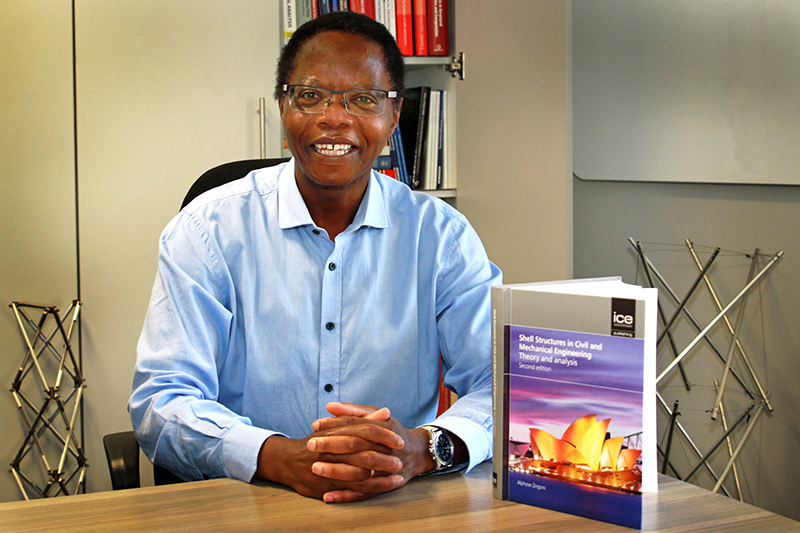
In his opening remarks, Professor Tim Ibell, a reviewer for the Institution of Structural Engineers (London), said, “It has been such a pleasure to read this book. Shell structures have so much to offer our profession, and this book demonstrates their extraordinary scope of application. It leads the reader rather beautifully through the increasing complexity of applications of shell structures, providing full derivations throughout to problems of real practical importance.”
Shell structures are found in many fields of engineering, notably the civil, mechanical, marine and aeronautical disciplines. They’re also encountered in the form of iconic roofs such as the Sydney Opera House in Australia, large hyperbolic cooling towers at power stations, fuel-storage steel tanks at petroleum refineries, elevated water tanks in urban areas, boilers and pressure vessels, car bodies, submarine hulls, aircraft fuselages and spacecraft shells.
The nomination reads, “In writing this book, Zingoni, a world-recognised authority on shell structures, has employed a unique strategy that allows closed-form analytical solutions to be successfully obtained for a wide range of practical shell problems.
“These closed-form solutions are highly suitable for practical calculations; they permit the designer to rapidly evaluate stresses in a given shell structure, or to gain important design insights by simply examining the form of the mathematical expressions, or to obtain a deeper understanding of the effect of varying the design parameters of the shell.
“Besides the academic reviews, there is nothing as rewarding as knowing your book is actually being used by students worldwide.”
“It is this powerful approach that sets the book apart from all other existing books.”
Since publication, the book has won praise in both academia and industry. It has attracted a diverse readership (postgraduates, academics and practitioners) at home and across many countries around the world.
Zingoni added, “Besides the academic reviews, there is nothing as rewarding as knowing your book is actually being used by students worldwide to understand the subject better, and by professionals in industry to design real engineering structures.”
There is no secret to writing a book of wide appeal, even on the topic of engineering, he said.
“One simply has to start by deciding what range of readership to address and see how best to achieve that objective … I wanted a unique book that would appeal to a wide spectrum of readers, from [postgraduates] of shell theory and their lecturers, to academics, researchers, software developers and practitioners in industry.
“So first, the presentation of theory had to be sufficiently rigorous to satisfy the requirements of students and academics. Secondly, the content had to incorporate a good amount of original research in order to appeal to researchers in the field. Thirdly, the solutions had to be sufficiently accurate to be usable as benchmarks by developers of engineering software. And finally, the book had to include practical methods that are amenable to the design of real engineering structures, in order to appeal to practitioners.”
 This work is licensed under a Creative Commons Attribution-NoDerivatives 4.0 International License.
This work is licensed under a Creative Commons Attribution-NoDerivatives 4.0 International License.
Please view the republishing articles page for more information.
Related
